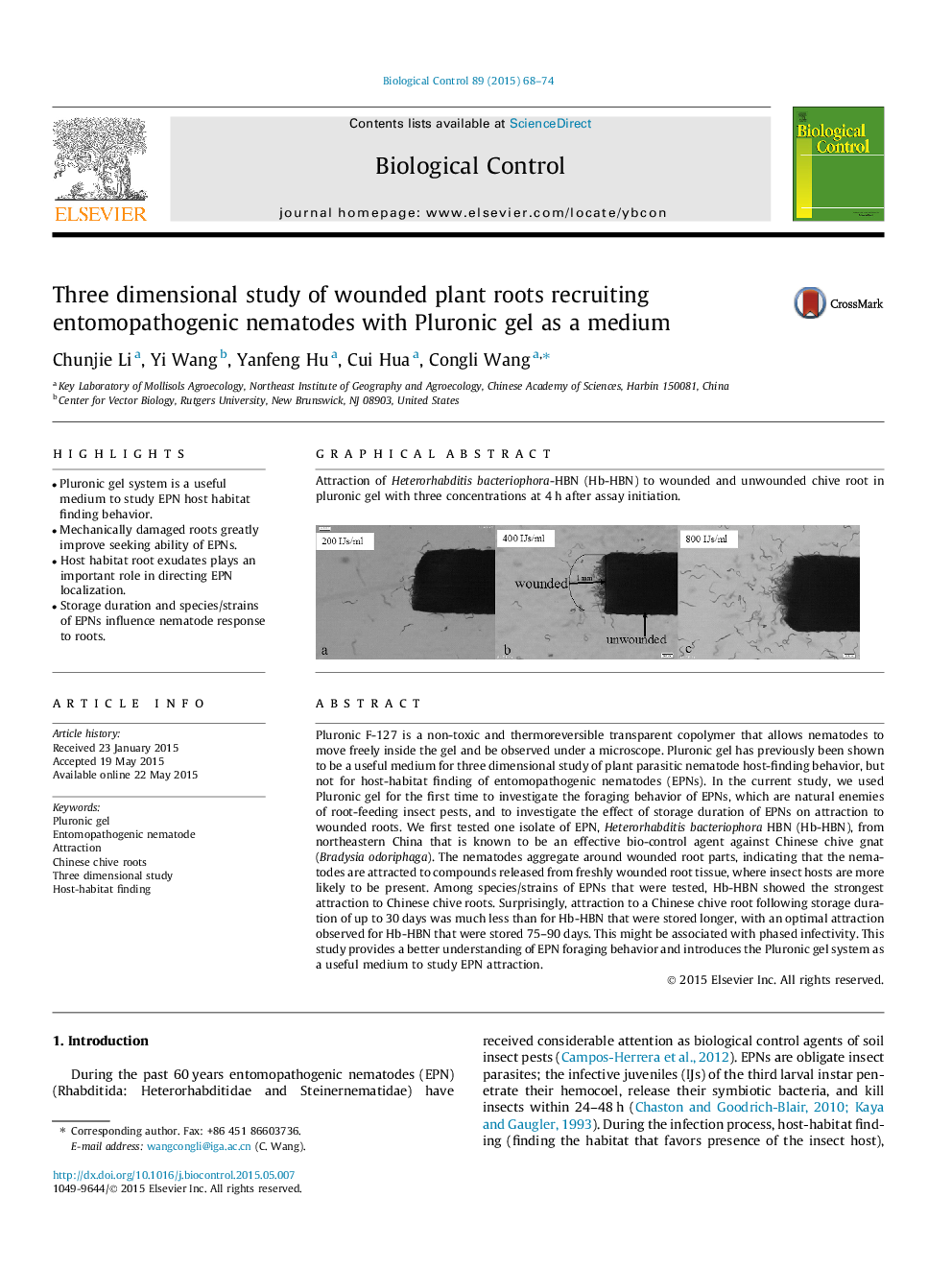| کد مقاله | کد نشریه | سال انتشار | مقاله انگلیسی | نسخه تمام متن |
|---|---|---|---|---|
| 4503746 | 1624245 | 2015 | 7 صفحه PDF | دانلود رایگان |
• Pluronic gel system is a useful medium to study EPN host habitat finding behavior.
• Mechanically damaged roots greatly improve seeking ability of EPNs.
• Host habitat root exudates plays an important role in directing EPN localization.
• Storage duration and species/strains of EPNs influence nematode response to roots.
Pluronic F-127 is a non-toxic and thermoreversible transparent copolymer that allows nematodes to move freely inside the gel and be observed under a microscope. Pluronic gel has previously been shown to be a useful medium for three dimensional study of plant parasitic nematode host-finding behavior, but not for host-habitat finding of entomopathogenic nematodes (EPNs). In the current study, we used Pluronic gel for the first time to investigate the foraging behavior of EPNs, which are natural enemies of root-feeding insect pests, and to investigate the effect of storage duration of EPNs on attraction to wounded roots. We first tested one isolate of EPN, Heterorhabditis bacteriophora HBN (Hb-HBN), from northeastern China that is known to be an effective bio-control agent against Chinese chive gnat (Bradysia odoriphaga). The nematodes aggregate around wounded root parts, indicating that the nematodes are attracted to compounds released from freshly wounded root tissue, where insect hosts are more likely to be present. Among species/strains of EPNs that were tested, Hb-HBN showed the strongest attraction to Chinese chive roots. Surprisingly, attraction to a Chinese chive root following storage duration of up to 30 days was much less than for Hb-HBN that were stored longer, with an optimal attraction observed for Hb-HBN that were stored 75–90 days. This might be associated with phased infectivity. This study provides a better understanding of EPN foraging behavior and introduces the Pluronic gel system as a useful medium to study EPN attraction.
Attraction of Heterorhabditis bacteriophora-HBN (Hb-HBN) to wounded and unwounded chive root in pluronic gel with three concentrations at 4 h after assay initiation.Figure optionsDownload as PowerPoint slide
Journal: Biological Control - Volume 89, October 2015, Pages 68–74
